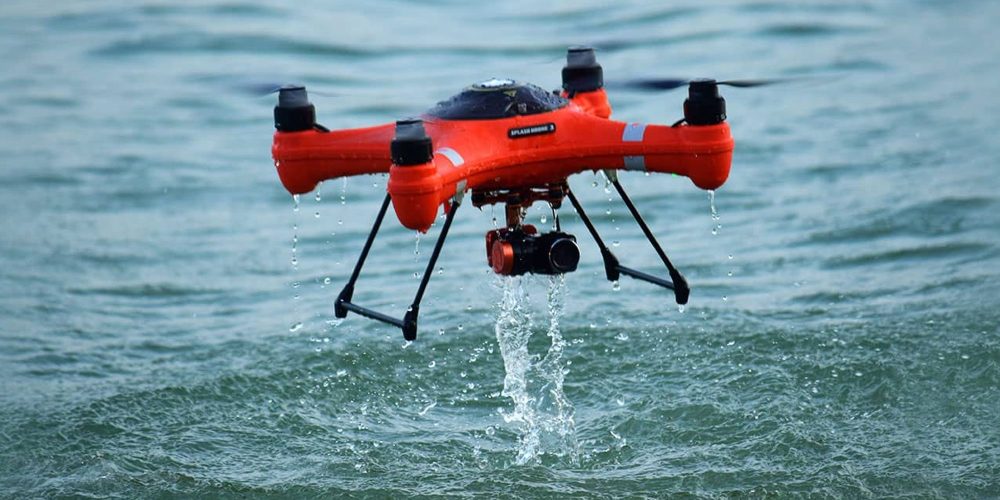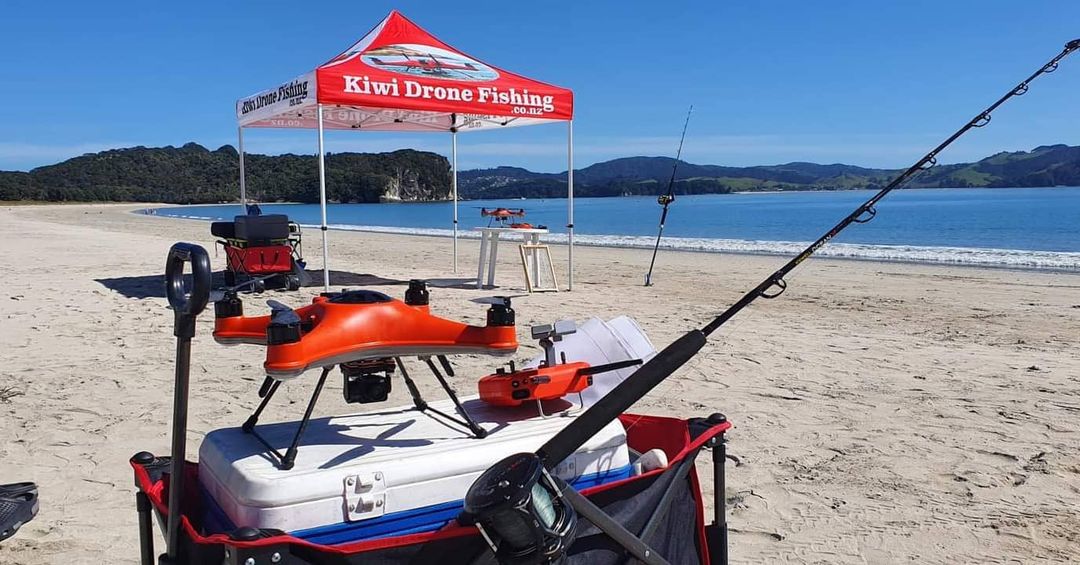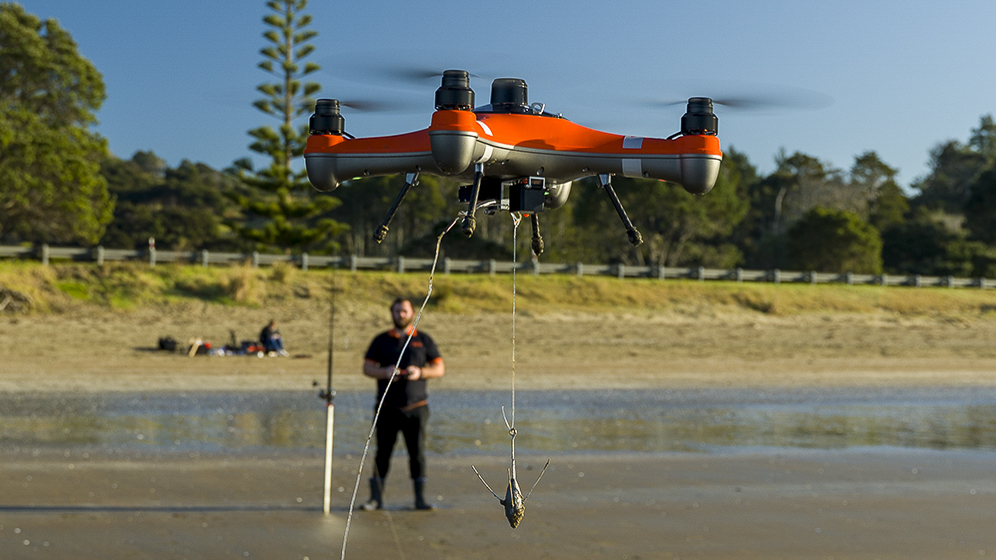
New Zealand has discovered a new way to fish: drone fishing. This innovative new technique uses drone technology to open up new fishing opportunities. Drone Fishing NZ is a leading retailer that sells DJI and Splash drones. GoFish cams, Splash drones, and custom built fishing rigs are also available.
Aerokontiki Drones
Sharkan offers a Fishhawk, a fishing drone that captures the action better. The drone's stabilized camera can shoot 12-megapixel photos at 30 frames per second and 4k UHD video at 12MP. You can even view the videos directly on your smartphone. The drone offers a range of good transmission and flight time, as well as a spare batteries that can be charged.
Mobula
The Mobula drone is specifically designed for fishing, so you don't have to worry about letting it fly into the water. The drone can survive in wind up to 20 kph and is buoyant. It also has built-in safety features, including automatic return to home, automatic payload release, and 3 different release mechanisms. A water-returning feature means that your drone will always return to the surface if its battery dies.
Banks'
The popularity of fishing drones has increased, drawing the attention of anglers as much as those who are interested in it. However, the use of a drone has come with its own set of problems. A drone is not suitable to fish in too deep waters. A second problem arises when a drone crashes in the same location a second time. You can't always rely on the information in the video if that happens.

SplashDrone 4.
Swellpro designed the SplashDrone 4 drone, which is waterproof and has a new float platform. It's ideal for fishing parties, all kinds of water activities and is made from corrosion-resistant materials and high-quality ABS to withstand any conditions. Smooth+ technology, which is a patented SplashDrone 4 flight control system, allows the user to have complete control of the drone. This helps it stay stable in any condition. The drone's advanced technology allows it capture every angle and every moment in the sky.
Drone for Fisherman
New Zealand Fisherman Drone Fishermans, you are in for a surprise. Snapper are a prized species for drone fishing enthusiasts. Snapper are also beautiful and delicious to catch. These fish can often be found off the coasts on the North or South islands. They are most common during their spring spawning season, which is when large numbers of them congregate. These fish can be caught in the summer, but they are also plentiful in the fall.
Flying a drone
These guidelines will help you ensure a successful trip if you plan to fly a drone to fish in New Zealand. The law should be understood. It's illegal for a drone to be flown over any marine life or within 500 m of any marine mammal. Your drone will be confiscated or damaged if you are not aware of the surroundings.
Payload for a Drone
Although you can buy a drone to fish, it is important to be aware of the payload. You need a drone that is strong enough to lift heavy fish and long-lasting flight. If your drone is only used for a short time, it will not catch enough fish to be worthwhile. Luckily, the technology behind drone fishing in New Zealand is getting better.

FAQ
What is the difference between a quadcopter and a hexacopter?
A quadcopter is an four-rotor helicopter which flies in the same manner as a conventional helicopter. It is equipped with four rotors, each of which can rotate independently. A quadcopter has four rotors. The hexacopter has six. Hexacopters are stabler and more maneuverable than quadcopters.
Are you interested in flying with a drone while on the road?
Drones are becoming more and more popular for personal and professional use. Drones are used for filming, photography, aerial mapping, search and rescue, as well as other purposes. A number of new regulations have been approved by the FAA for drones. These include registration, licensing, pilot training and insurance. These changes will help ensure that drones stay safe for all.
Does the FAA regulate drones
The FAA supervises all aspects related to drone operations, including certification requirements and safety standards.
What is the law about drones flying on private property?
New rules have been issued by the FAA for commercial drone flying. These rules only apply to UAVs less than 55 lbs and lower than 400 feet above the ground. Commercial operators will need to register with FAA and get a license from agency. They will also require permission from local authorities to operate near airports and other restricted areas.
Statistics
- Research and Markets predict a growth rate of 51.1% over the next five years. (thedroneu.com)
- According to Indeed, a drone pilot gets paid $25.73 per hour on average in the US. (dronesgator.com)
- With the top 10% making over $100/h and the bottom 10% making as low as $10/h. (dronesgator.com)
External Links
How To
How to Fly Drones for Beginners
A drone is an unmanned aerial vehicle that can be remotely controlled and used for surveillance, aerial photography, film production, research, and other hobby purposes. The technology behind drones has been around since World War II. DJI's Phantom series quadcopters were first commercially available in 2010. Many types of drones have been made available since then, from beginner-friendly models such as the Parrot AR Drone 2.0, to high-end multi-rotor craft such as the DJI Mavic Pro.
There are several ways to fly a drone, including;
-
Remote control - This allows you to control the drone from your hand. There are two main types: Joysticks (like a radio), and On/Off switches (like an alarm clock).
-
Manual Control - Using a smartphone app, this method allows users to remotely operate the drone via GPS coordinates. You will need to keep track of where the drone is going and follow the directions from the app.
-
Autonomous Flight – This is when the drone handles all the piloting tasks. It allows the drone to fly independently without any human intervention. To enable autonomous flight, the drone should have a built in camera and sensors capable recording images and data.
-
Triggered Flight - This method is similar to manual control, except the pilot manually sets up a preprogrammed route, and the drone follows that route until it reaches the endpoint. After the program is complete, the drone automatically returns to the ground.
-
Landing Gear: Some drones have landing gear that allows them safely to land in case they lose power or run low on battery.
-
Goggles - Some pilots wear goggles to protect themselves from debris while operating.
-
Camera – Some drones have cameras, which allow you to take photos or videos from up high.
-
Obstacles. Some drones can have obstacle avoidance technology that stops them from hitting obstacles.
-
Speed - Drones can reach speeds up to 40 mph.
-
Battery Life: Most drones have a battery life of between 20 and 30 minutes depending on how many power sources you use.
-
Range - Some drones can travel upto 30 miles depending on their models.
-
Power source: Some drones will require an external power source while others can be powered by internal batteries.
-
Weight – Some drones are less than one pound, while other models can be up to four pounds.
-
Size - From small drones that can be carried in the palm of one's hand to larger drones that weigh over 50 pounds, drones come in a variety of sizes.
-
Price - From high-end models that cost thousands of dollars to low-cost options that start at $100, all drones fall under a certain price category.